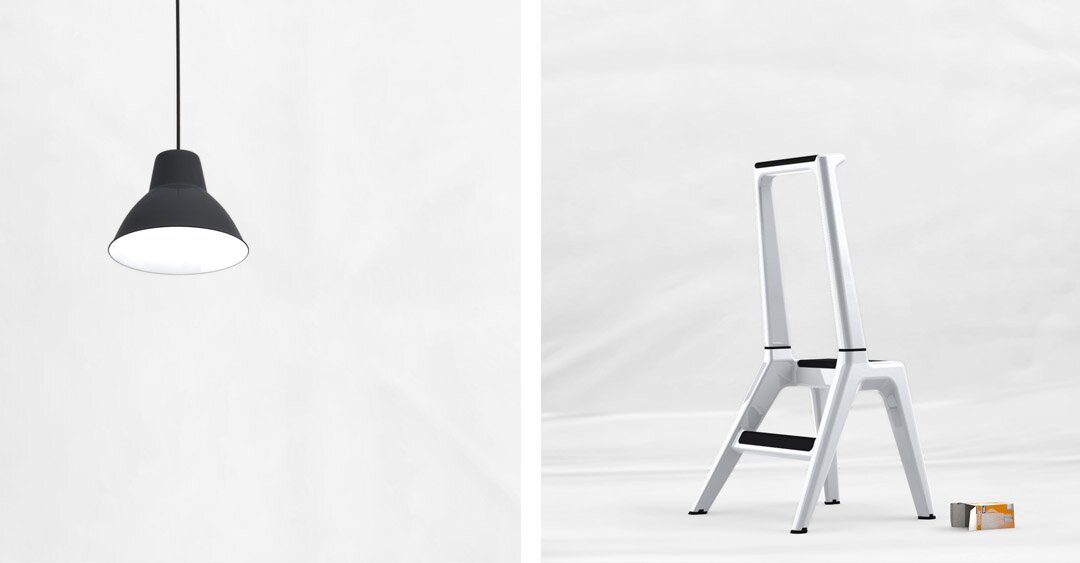PROJECT
OVERVIEW
Stool
2010 (4th Semester)
Supervised by Prof. Detlef Rhein
3 months
Porter is a unique kind of (s)tool designed to help people to safely reach out to areas out of their body range. Every year numerous accidents happen in households while trying to reach things. One of the causes is the use of chairs or other conveniently available furniture as a substitute to ladders. In contrast to ladders, Porter has multiple
uses which allow it to be more present in living space than ladders which are usually stored away when not in use. Porter features a vertically protuding rest to lean against when standing on the platform. This rest also enables the user to stand comfortably for extended lengths of time. This is especially helpful for elderly people
or someone suffering from cardiovascular disease. Common scenarios for this use are food preparation or dish washing. The black rubber inserts allow for a good grip and indicate the interaction areas.
For further reading, you can find a short summary of my design process down below.

BACKGROUND
My brief for the 4th semester was to research relevant subjects within human motion and to develop practicable solutions. What striked my interest the most was vertical motion as the human perception and locomotor systems are based mainly on horizontal orientation. It’s not difficult to guess distances horizontally nor is it hard to get from one point to another on a flat surface.
I worked out several subtopics of which the personal living space was the one i decided to focus on. Certainly there are lots of critical subjects within vertical motion that
can be worked on but my preference was to go with a subject a large amount of people can relate to and thus could potentially have a larger impact.
Focusing on movement within private living areas requires thinking about space itself. There are several crucial reasons to think about the use of space in our homes - Rising cost of living, urbanisation as well as a continously growing world population are just a few. By looking at personal living spaces through the perspective of human motion enabled me to get a different view
of the subject. My goal was to empower people to use vertical space within their homes. I was aware that there already is a wealth of solutions (storage, ladders, etc.) but these are mostly concieved from a structural perspective.
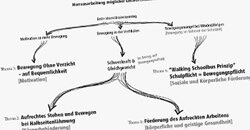
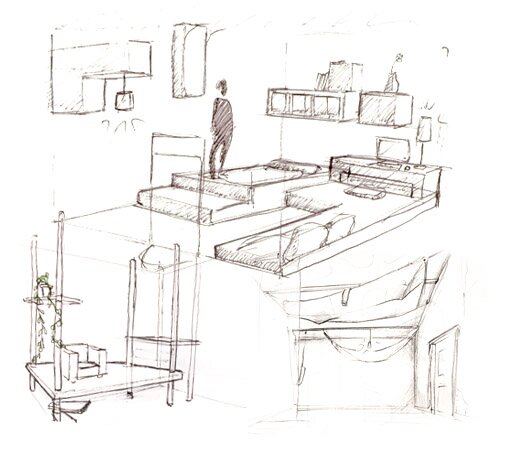
ITERATIVE CONCEPTING
My inital ideas were centered around living in layers - basically dividing the available space into 3-dimensional clusters to move around in. During concepting i adjusted my own briefing from modular platforms towards a more pragmatic result which would integrate better into an existing household.
Because of the limited amount of time available for the project i decided to focus specifically on a safe way of enabling people to access areas out of their reach.
Finally having a more precise briefing, i moved on to explore various concepts again. In the beginning these concepts were still very close to existing solutions like steps or ladders but analyzing typical movements in home spaces once again helped me to look at the subject through a different perspective.
Early concept sketches
Movement studies
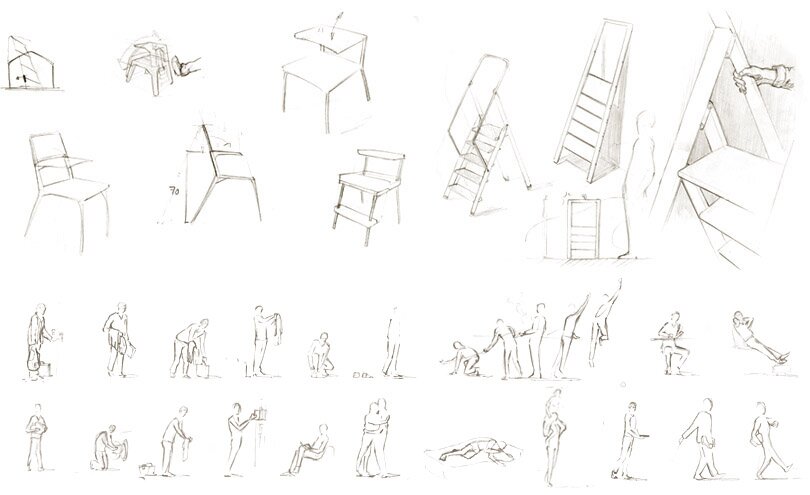
Paper models 


Thoughtlessnes is a common cause of home accidents. Because of their convenient availability oftentimes chairs are used as insecure substitutes for steps and ladders.
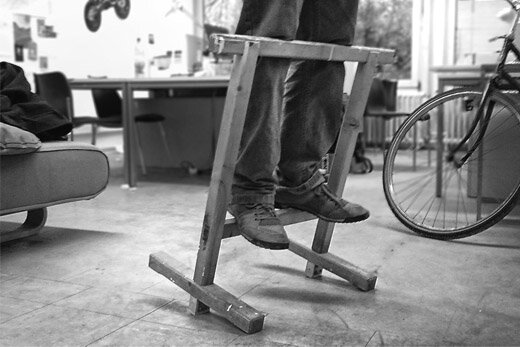
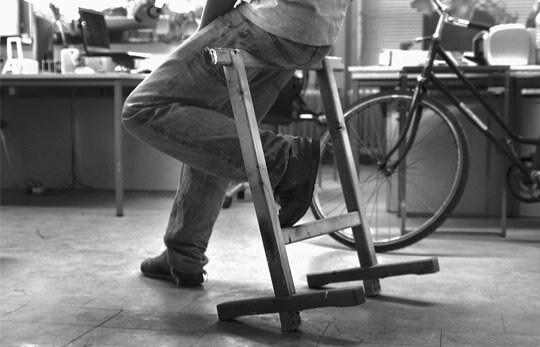

Unexpected Turn
One of the crucial moments in this project was when i grabbed a trestle (more or less by accident) to demonstrate some of my research to a fellow student. I noticed that when leaning against the upper beam it would provide great stability and a very secure feeling, even when reaching far out. This discovery stirred my interest so i decided work towards a new product archetype, abandoning established principles.
I built a couple of physical and digital mock-ups to verify my assumptions. From that point forward it was mainly iterative work - refining the design, working out details, construction as well as aesthetics.
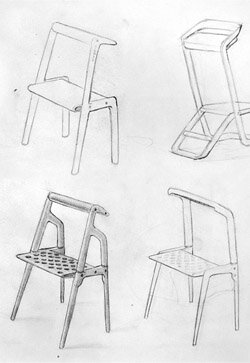
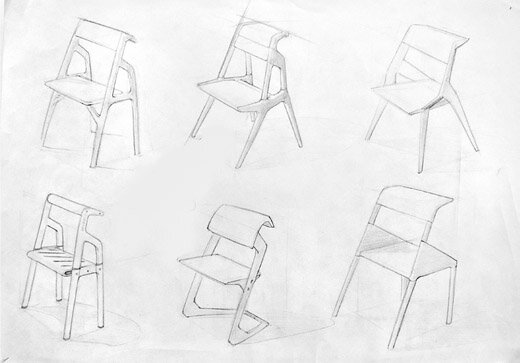

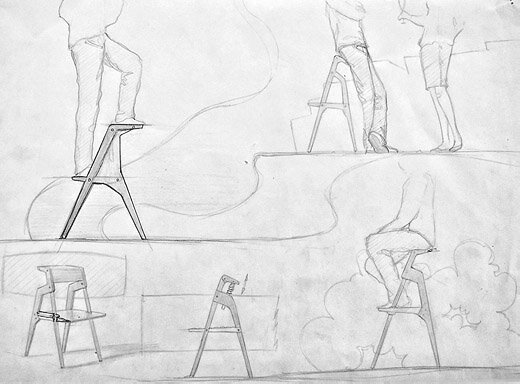

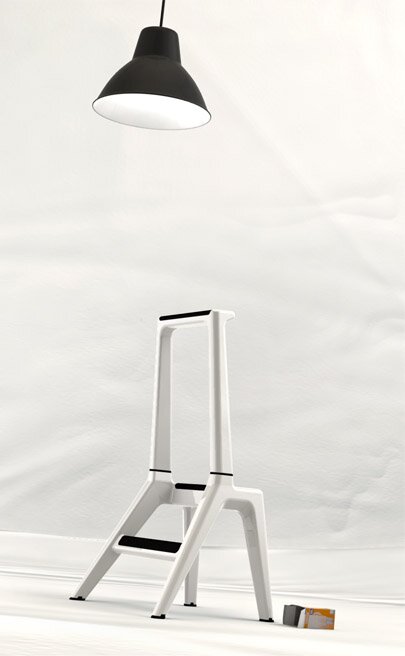
The Porter
The final design is a new kind of household tool with a unique appearance and functionality. It is more of an assistant than a piece of furniture. Looking at it from a universal design perspective it can help people of any age in different ways. Kids can safely reach tabletops and washbasins, elderly people or someone suffering from cardiovascular disease can lean against the rest to stand upright for a longer amount of time or use it as a supporting rail to step onto “Porter”. For younger people it becomes a versatile helper, possibly even a valet. Because of it’s uncommon shape it can be used creatively for all sorts of applications.
RETROSPECTION
Looking back at the project, there certainly are a couple of issues with the design but what probably irritates me the most is the choice of material and color. One of my goals was that my design would integrate well into a common household. I guess a different choice of materials and construction could have given it a more natural and self-evident appearance.
Either way, the semester was rewarding for me. I managed to pick up new techniques and began to understand that designing oftentimes means discarding. This lead to me frequently reflecting and questioning my work process.
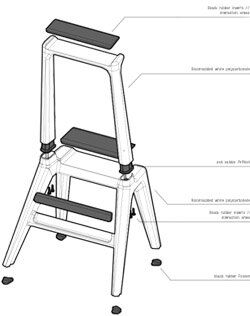
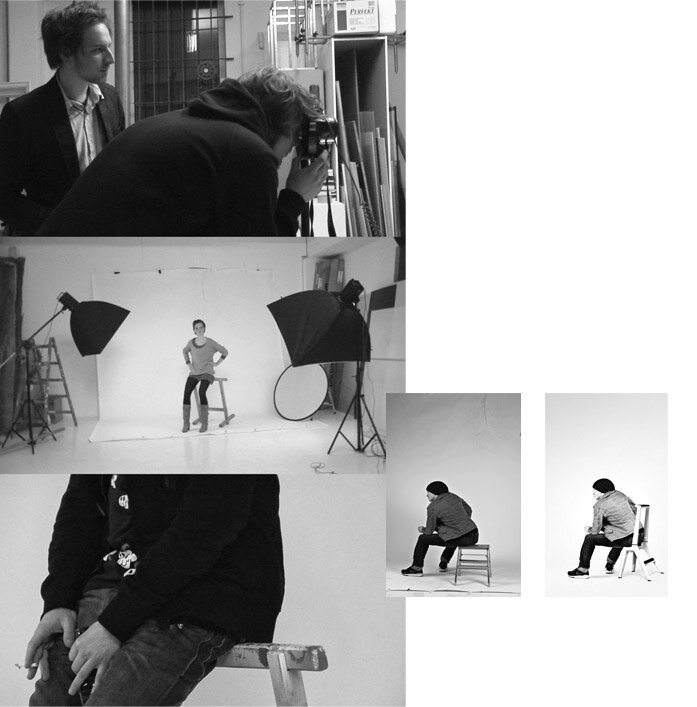
Copyright © 1985 - 2012 Henning R. Horstmann unless mentioned otherwise
